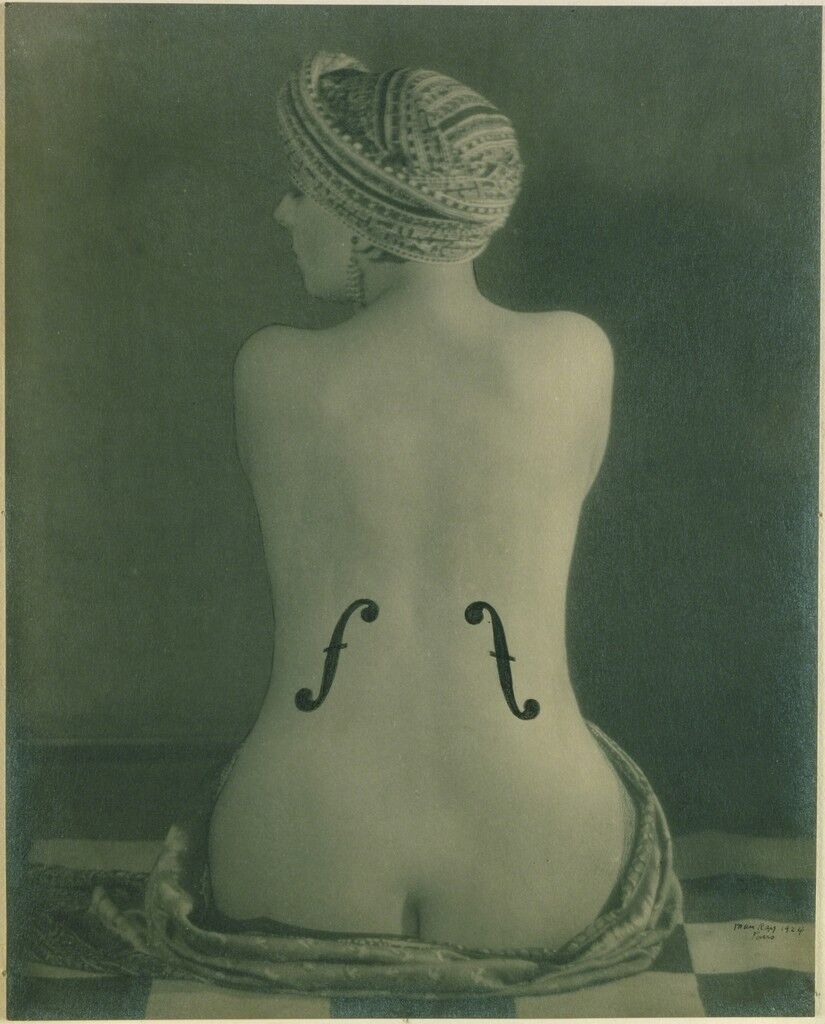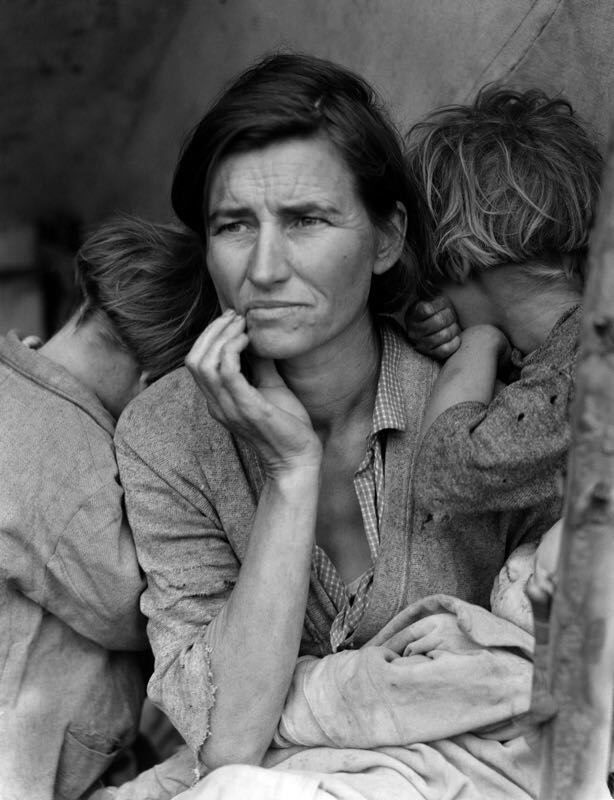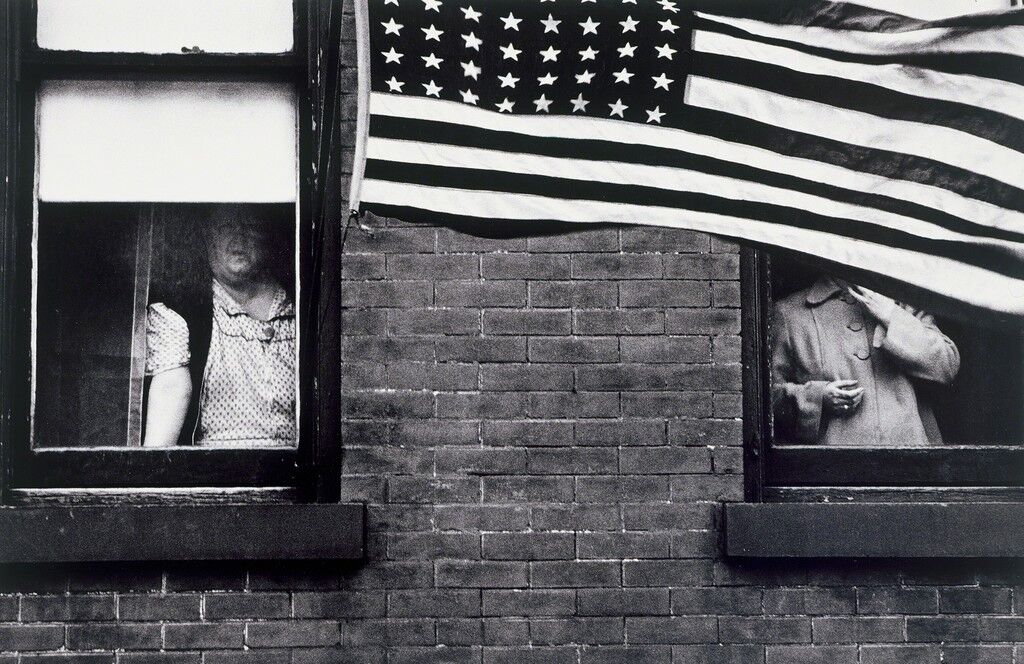
From the time when the inventor Nicéphore Niépce published the first ever photograph in the 1820s, this kind of creativity has come a long way during its two centuries of existence. The book “The Brief History of Photography: A Pocket Guide to Key Genres, Works, Topics and Techniques†by Laurence King Publishing, by Jan Haydn Smith (Ian Haydn Smith), focuses on important photos that have shaped both artistic expression and public opinion. Below is a selection of some of these photos, followed by excerpts from the book.
The inventor and discoverer scientist Nicephore Niepce embodied his interest in lithography and experiments with a camera obscura and made one of the first major breakthroughs in photography.
The earliest surviving photographic image was considered lost for more than 50 years, until in 1952 it was discovered in a suitcase by the historian of photography Helmut Gernsheim. To get it, Niepce picked up a tin plate and covered it with a thin layer of Jewish resin (asphalt). The light-sensitive qualities of this compound allowed Niepce to develop a process that he called "heliography". The photosensitive coating hardened when exposed to light.
After exposure to such a plate, it was washed with a solvent based on lavender oil, and only solidified areas remained on it. Thus, the image was literally embedded in the surface by sunlight. Niepce's first attempt to exhibit a view of one of the rooms in his family home was made on the surface of a lithographic plate, but eventually it was erased.
This photograph was originally considered the result of an eight or nine hour exposure to sunlight on the walls. But later one researcher, using the notes of Niepce and the same photographic process, found out that the exposure time actually lasted several days (!).
Born in America, Man Ray made Paris his home. He became the photographic embodiment of the avant-garde movements of Dadaism and surrealism. Man Ray blurred the line between fashion and art, achieving an amazing effect.

For a photograph portrait of "Violin Engra," which depicts a nightclub singer, actress, artist and model artist Kiki de Montparnasse, Man Ray painted two f-shaped holes (efs) on the unexposed film body, and then exposed it.
Ingres' violin refers to one of Man Ray’s sources of inspiration — the French neoclassical painter Jean-Auguste Dominique Ingres, who also played the violin. Kiki's body, turned into a musical instrument, as if hinting that it should be played.
At that time, Kiki and Man Ray were lovers, which complements this interpretation. The fact that the viewer does not see the arms and legs of the model underlines the vulnerability of the image. The name of the photo contains a French idiomatic turn, which means "hobby", which hints at the ambivalence of the image, between objectization and beauty, although with a certain amount of humor.
Not a single photographer has created such a complex dialogue between the viewer and the image of social attitudes towards sex and identity issues through self-portrait like photo artist Cindy Sherman.

This photo refers to the second series of Sherman raids in color, which explores how women are represented in pornographic magazines. By order of Artforum, each photo should be placed on a double-page spread in the style of Playboy magazine. Shooting performed close-ups, this method Sherman will continue to use in their projects.
In the photo, Sherman uses an orange almost kitschy color, the model lies with a raised skirt exposing the part of the girl's thigh. A facial expression could be read as thoughtfulness, a crumpled sheet of paper with dating ads in her hand suggests that she just made or is about to make a call. Photography goes beyond simple imitation of style, and Sherman questions both the presentation and the perception of such images.
Leading pop art avant-garde artist Andy Warhol used the limitations of the Polaroid camera to create thousands of portraits. Photography has always been central to the work of Warhol. His self-portraits, which he shot between 1962 and 1986, reflect how the photographer presented himself.

With each episode, his face becomes more and more like a mask. Warhol began using the Polaroid camera in the 1970s, initially as the basis for more complex works, but many of his photos never went beyond simple, often crudely taken portraits.
Warhol's self-portraits in women's clothes are reminiscent of photos of Marcel Duchamp in a woman's dress (by Man Ray). Wearing a woman enchants Warhol, and this series of photographs seems to blur the line between the sexes. His expression remains empty, slightly naive, it makes the viewer want to look and turn away from him.
These contradictions underlie the personality of Warhol, which both attracts and repels. Using the Polaroid camera makes the image more flat and the light sharp, but Warhol uses subtle shadows to soften its contour. The red color of lipstick and rouge adds some playfulness to the image.
One of the earliest known photo artists Julia Margaret Cameron created beautiful portraits in which the artistry and spirituality of the image in front of the technical perfection of the photo itself prevails.
The tender and sad photographic image of the legendary Beatrice Censi, immortalized by Percy Bysshe Shelley's poetic drama of 1918, best illustrates the photographer’s aspiration to move away from the momentary to eternal art.
Inspired by an ancient portrait (ca. 1600, by Guido Reni) of an Italian noblewoman named Beatrice Chenchi, executed for conspiring to kill her cruel father, Cameron wanted to reveal the character’s spirituality, to go beyond the physical to the realm of pure emotions.

Despite the fact that many contemporaries of Cameron did not recognize her work, over time they gained great value. Her photo images use soft focus to achieve a striking visual effect.
Photos of Lewis Hayn told about the use of child labor in the US industry. Hein documented all aspects of working class life in America. However, his enthusiasm for the mechanization of modern American society was held back by the difficult circumstances in which people were forced to work.
The photo "The Mechanic and the Steam Pump" first appeared in the December issue of the sociological journal The Survey Graphic in December 1921. It photos was one of many photographs taken by Hain over the course of a decade at the country's huge power stations.
Focusing on each hinge and connection, the photo conveys the photographer's thrill in front of huge machines, but the main idea is that these huge machines can only work thanks to the hard work of American workers. This is a symbiosis between man and machine, and a wrench is a channel between metal and flesh. In this carefully constructed snapshot, Hein turns a worker into a symbol of industrial America.
With the onset of the Great Depression, Dorothea Lange left her studio for the sake of the outside world and became one of the most compassionate chroniclers of the American working class.
The power of Lange's "White Angel Breadline" photo work (1933), in which the homeless man stood in line for food, attracted the attention of the Farm Security Administration (FSA). They invited Lange to become one of a group of photographers to record life in American rural states. Dorothea Lange traveled the country for five years photographing people who were looking for work. These photos, like the photos of colleagues Lange, significantly contrasted with earlier currents in the photo.

"Mother of immigrants" is perhaps the most famous image that came out of the FSA project. Lange met the character of this photo Florence Owens Thompson and her family among thousands of migrant workers in a pea picker camp in Nipomo Mesa, California. Lange took just a few pictures.
The children turned away from the camera, thus drawing the viewer's attention to the figure in the center, a woman similar to Madonna. Thompson’s facial expression, her hands, her posture are the focus of attention, they convey her mother’s anxiety about the future, and make her a symbol of America’s economic difficulties in the 1930s.
Timothy H. O'Sullivan was a teenager as an apprentice to photographer Matthew Brady, and over time became one of the most important chroniclers of the American Civil War.
Photos taken during the war are a seismic shift in the role of photojournalism in the United States. O'Sullivan was one of ten photographers with whom Brady ordered a series of military photographs, key figures, military camps and fights, shot as closely as the safety allowed for the photographer. The resulting images, as Brady noted, presented the audience with an "eye of history."
Gettysburg was the most brutal battle in the war, which killed about 50,000 troops during the three days from July 1 to July 3, 1863. O'Sullivan captured the gloomy, deadly landscape, covered with the bodies of those killed.
Most of the bodies image in the photograph are missing shoes, which, apparently, were removed from the dead by other soldiers, deprived of their shoes. A strong and truthful photograph looks even more disturbing because of the fog, which, like a mortal shroud, is lowered onto the field. Unlike modern wars, which, as a rule, destroy the earth, the landscape remained intact. If it were not for the corpses scattered across the field, this scene could be a pastoral idyll.
In his book "The Americans" (1958), Robert Frank sought to reflect the scenes that Americans could take pictures if they traveled in their own country. He presented a collection of photos that "are always and always easy to find, but not so easy to select and interpret."

Between 1955 and 1957, Frank traveled with a camera throughout America. The resulting 83 photo stories were divided into four groups, in which each image was related to another thematically or conceptually. These photos convey a picture of American rural and urban life.
"Parade, Hoboken, New Jersey" - this is the first photo from the book "Americans". The idea of ​​the photo is far from Rockwell's portraits adorning the covers of The Saturday Evening Post in the 1950s; it was made in an everyday style that seemed radical at the time.
In the photo - two women who look at the parade from the windows of a residential building. The first woman, an elderly and full, face is hidden by the shadow of half-let curtains, she is dressed in a dress that was clearly not fashionable even at that time. Another woman's face is completely hidden by the American flag, she is wearing a warm coat.
This woman is slim, and it looks like she is cold. It seems that both of them are burdened with the past, looking out of the windows with caution.
In the series of street portraits, the people being photographed are holding cartons with inscriptions expressing what they think and how they feel. The idea behind the series was that the photographer "cannot photograph people without knowing them.
" Approaching strangers on the street, Gillian Wearing asked them to write what they thought at the moment, on a piece of cardboard. This leads to the fact that a black policeman writes the word "Help", an elderly person writes the word "I", a young woman says "I lose control of my life." In the photos, Wearing compares the thought, its expression and its interpretation.

This reception was used in 2017 by London Mayor Sadiq Khan and artist David Shrigli as part of the artwork series under the hashtag #LondonIsOpen, which were placed at 270 London Underground stations and reflected its openness to the world, despite the referendum that had just voted for UK from the European Union.